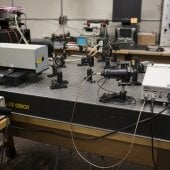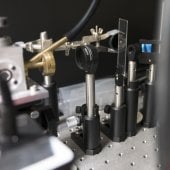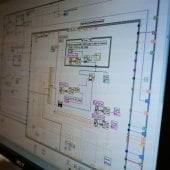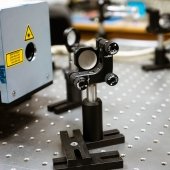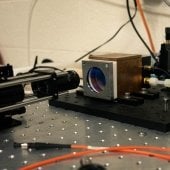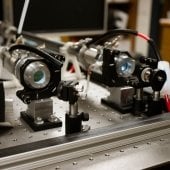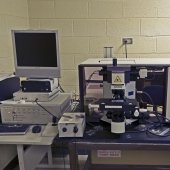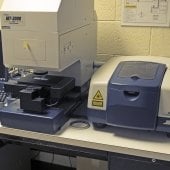In the Environmental Optics Laboratory (EOL) we perform research to reduce uncertainties by developing new measurement and analytical methods. Several graduate and undergraduate students participate in research activities and contribute to a number of scientific projects.
Gases and fine particles (aerosols) emitted by anthropogenic and natural activities influence Earth's radiative budget, climate, clouds, precipitation, and air quality. Uncertainties in the aerosols' optical properties, concentration, and distribution result in large uncertainties in their anthropogenic effect on the climate—past, present, and future. Non-absorbing aerosols cool the planet, masking the warming due to carbon dioxide, but by how much is uncertain.
Black carbon aerosols, by contrast, strongly absorb light contributing to global and regional warming. As black carbon ages and transforms in the atmosphere, its optical properties change with time. Additionally, the effect of some organic aerosols that scatter visible light, but absorb UV-blue light (brown carbon), is not well quantified. Accurate measurement of aerosol optical properties over the entire solar spectrum is a technological challenge that must be addressed to quantify the impact of aerosols on climate
Equipment present in the laboratory includes a high-power (approximately four watts) supercontinuum (400–2200 nm) sub-nanosecond laser. The laser covers almost the entire solar spectrum wavelengths simultaneously and has an adjustable repetition rate with a maximum of 20 MHz. Opto-acoustic tunable filters and high-quality interference band-pass filters allow for the selection of a specific spectral band. A photoacoustic and nephelometer cell is used in the laboratory to measure aerosol absorption and scattering. In addition, a droplet-levitation system and ancillary optical-analysis system is under development to study aerosol-droplet interactions at various environmental conditions.
Other instruments present in the laboratory include optical particle sizers and counters, automated aerosol filter collectors for electron microscopy analysis, a portable condensation particle counter, various lasers, a lightweight nephelometer, and various general purpose electronic instrumentations.
Researchers
- Distinguished Professor, Physics
- Director, Atmospheric Sciences Ph.D. Program
- cmazzoleni@mtu.edu
- 906-487-1226
- Fisher 112
Specialties
- Atmospheric Science
- Aerosol properties (optical, physical and morphological) and effects on clouds and climate
- Instrument development and environmental optics
